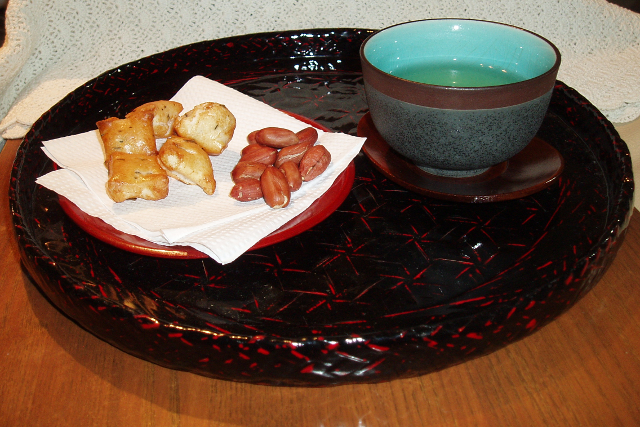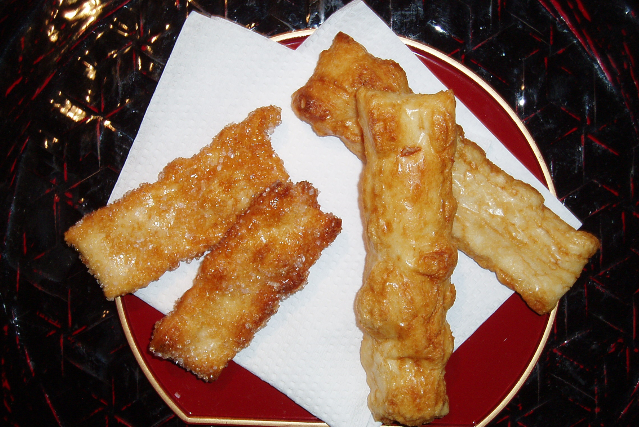My favorite rice cracker shop in Yanaka
“Saganoya-San” has been my favorite rice-cracker shop in the neighborhood of my current residence in Sakuragi in Ueno in Taito-Ku where I had moved from Saku-City in Nagano Prefecture way back in 1950.
At that time the founder of the shop had retired from cracker-making and selling business. His son took over the business. It was observed that he was often taking his grandson for fishing. Now his grandson is succeeding the business.
The shop is a family concerned operation. It is placed at a partition of a row house which is called “ Nagaya” in Japanese and a traditional architectural style for ordinary people. It is a tiny but clean and decent shop.
Japanese traditional taste handed down through 3 generations for 100 years
They are making and selling various sorts of rice crackers such as “Senbei”, “Okaki” and “Arare” which have been traditional and popular crackers to most of Japanese.
The rice crackers are roughly classified into 2 kinds, Senbei and Arare/Okaki. Senbei is made of ordinary rice and produced through such processes as the hand kneading of rice flour with hot water, steaming of the dough, pounding the boiled dough, forming into thin round or square shapes, roasting them over a charcoal fire and seasoning with soya bean source.
Meanwhile Arare & Okaki are made of more glutinous rice and produced in almost same processes as Senbei. But sun drying process is slotted in between the pounding process and the forming. Arare & Okaki are formed into relatively smaller shapes than Senbei. These crackers are preserving Japanese traditional taste. And the craftsman’s skill has unchangeably been handed down through 3 generations for about 100 years.


Once crunching the cracker, it generates a crispy palatal sound, “Sakku”.
A savor of roasted cracker spreads over inside the mouth and then a flavor of a soya source can be tasted.
My favorite one is a cubic shaped cracker named “Kobuiri” containing chips of kelp. If we have it together with peanuts which are also sold in the shop, it offers us the best harmonized taste.
And there are also a rectangular shaped cracker named “the night of autumn”(Akino-Yo in Japanese) and its version being frosted with crystal sugar, named first frost (Hatsu Shimo in Japanese). These enable us to feel a charm of the seasons.
Ya-Ne-Sen
This area is called Ueno Hill Station. More than 70 numbers of temples have been clustered together on this hill since the Edo Period. And it forms an old temple town.
One can still enjoy a rustic tranquility in this area, even though it is located just in hustle and bustle center city of Tokyo. Because of its geographical accessibility, TV recently introduced this area as old temple town providing friendly atmosphere named “-Yanaka-Nezu-Sendagi areas so called “Ya-Ne-Sen”. Since then we observe a lot of foreign tourists here around.
To be surprised, it is observed that these foreigners dropped by my favorite shop Saganoya to buy the rice crackers, Senbei, Okaki and Arare.
Thinking about the reason one try to figure out why Europeans and Americans have generally an inclination to favor a dry and crispy texture and besides the rice cracker could also meet the requirement of the people who have the limitation of food, such as Vegetarians, Vegans and Islamic people (Halal Food)
In retrospect, Indian people are very fond of a spicy rice cracker named “Kakinotane” which was brought by me as snack for drinking party. They were rushing to pick up the rice cracker without distraction to other indigenous snacks.
Today Saganoya San is full of clients from China who are visiting Japan during their spring festival holidays. The master and his wife are busy in responding to those foreign clients
It appears that the rice cracker is trying to get its international presence from local.
I am sincerely hoping that my favorite rice cracker shop will be able to hand down the traditional taste from third generation to fourth so that my son and grandchildren can also enjoy Japan’s own rice-cracker delicacy.
